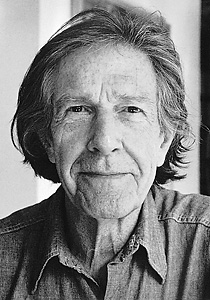Cage, John (1912-1992), was perhaps the most radical and controversial modern American composer. He was best known for his experiments with aleatoric (random or chance) music. His Imaginary Landscape No. 4 (1951) was written for 12 radios with two performers at each, one manipulating the knob that changes stations and the other the volume control. The composition’s notation is precise, but the sound cannot be predicted and varies with each performance according to what is on the air.
Cage was born on Sept. 5, 1912, in Los Angeles. In 1938, he first composed music for prepared piano. This music calls for various objects–bolts, screws, or rubber strips–to be inserted between some of the piano strings. When the performer hits the keys for these strings, the sounds resemble a percussion instrument, as in Sonatas and Interludes for Prepared Piano (1948).

Cage believed that any sound or noise surrounding us is music and thus the distinctions between life and art should be broken down. In 4’33” (1952) for piano, the performer sits silently at the instrument for 4 minutes and 33 seconds, inviting the audience to listen to any sounds and noises in the hall and those from outside. Cage’s books include Silence (1961). He died on Aug. 12, 1992.
